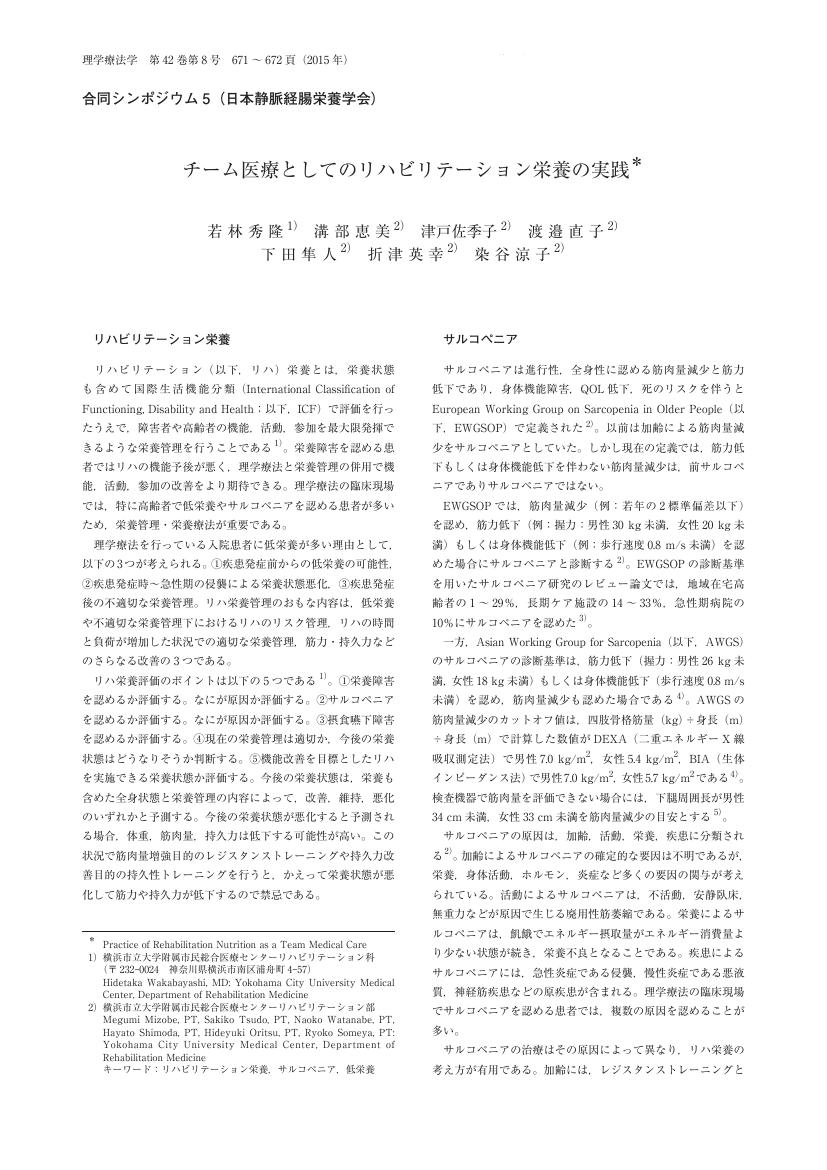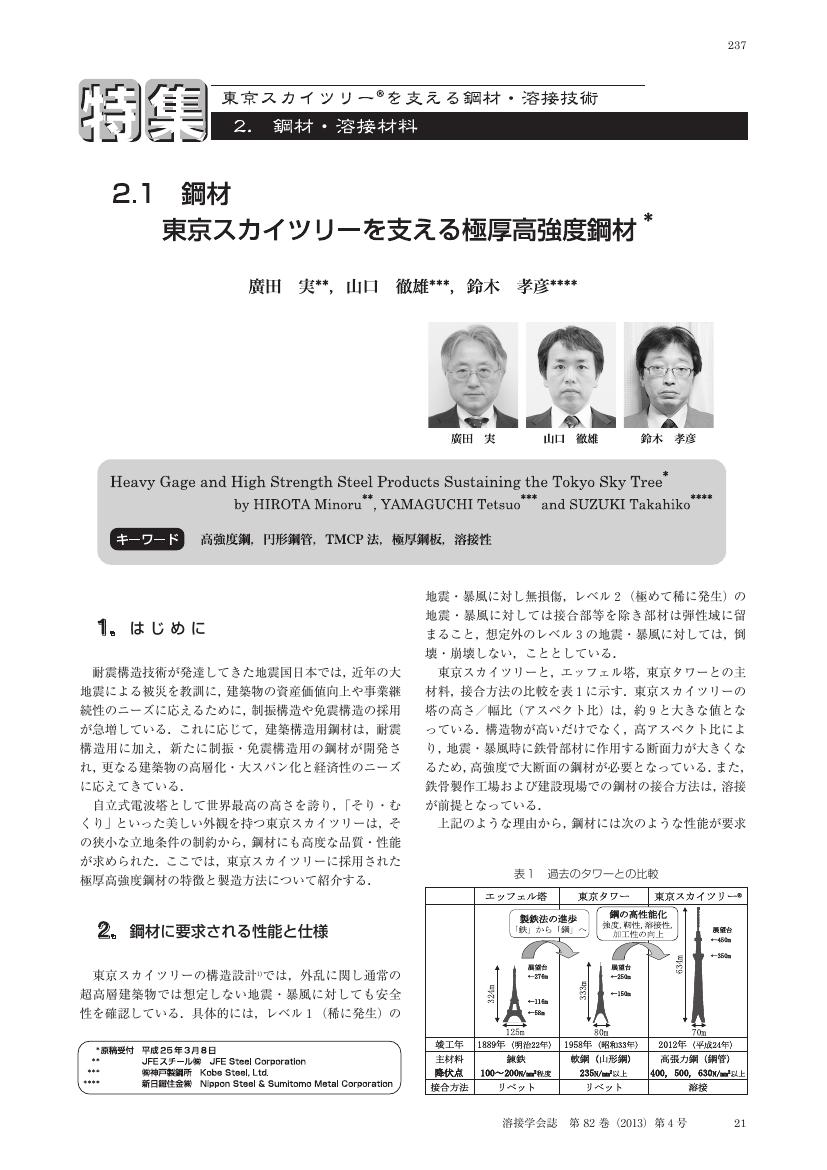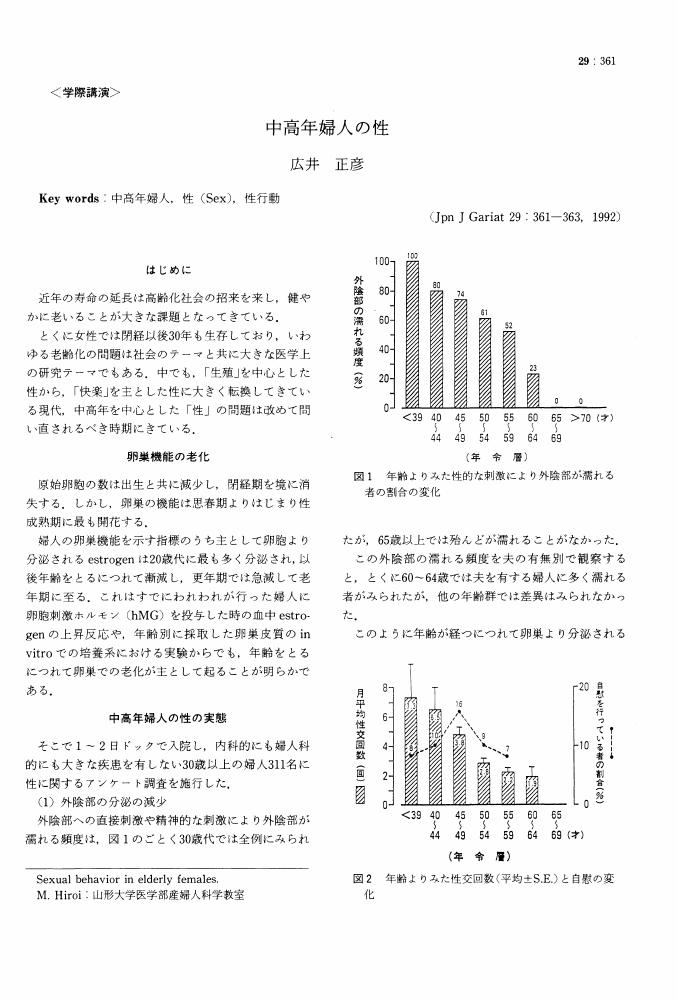8 0 0 0 OA 大道芸空間における行動特性に関する研究
- 著者
- 篠崎 高志 下村 彰男 小野 良平 熊谷 洋一
- 出版者
- 公益社団法人 日本造園学会
- 雑誌
- ランドスケープ研究 (ISSN:13408984)
- 巻号頁・発行日
- vol.63, no.5, pp.721-724, 1999-03-30 (Released:2011-07-19)
- 参考文献数
- 11
大道芸は場所的, 時間的に観客を拘束せず誰もが気軽に楽しめるという魅力がある。本研究でば大道芸空間 (大道芸が行われている場) における行動を観察し, 空間的.時間的な変化に着目して行動特性を明らかにすることを目的とした。対象地点として線的.面的の2タイプの空間から2地点ずつ4個所を想定し, 各地点において演者が同一内容の大道芸を行い.高所に設置したビデオカメラにより人々の行動を記録した。得られた画像から大道芸空間において誘発される行動とその位置に関して分析し, また, 一人一人の行動を記録し, 行動区分した。その結果人と人との相互作用, 空間の性格演者からの距離により行動が決定付けられることがわかった。
8 0 0 0 我が国のDMCAテイクダウンノーティスの利用実態と問題点
- 著者
- 安岡 規貴
- 出版者
- 公益財団法人 情報通信学会
- 雑誌
- 情報通信学会誌 (ISSN:02894513)
- 巻号頁・発行日
- vol.34, no.2, pp.109-123, 2016
<p>この研究は Google に対する我が国の DMCA テイクダウンノーティスの利用実態を Google 透明性レポートおよび Lumen の 2015 年上半期までのデータを利用することによって分析する。その結果、我が国において DMCA テイクダウンノーティスは、主にアダルトコンテンツと同人の著作権者が関わることによりかなり活発であることがわかった。さらに Google によって不正利用とされた削除リクエストおよび何らかの理由で対応されなかった削除リクエストが多いという問題点が明らかになった。これらの事実を基に、本稿は DMCA テイクダウンノーティスが適切に利用されているかどうかを社会全体で注意して見ることおよび申立者の DMCA テイクダウンノーティスの適切な発行を促すことを提案する。</p>
8 0 0 0 IR アメリカ化されるLGBTの人権:「ゲイの権利は人権である」演説と〈進歩〉というナラティヴ
- 著者
- 川坂 和義 カワサカ カズヨシ
- 雑誌
- Gender and sexuality : journal of Center for Gender Studies, ICU
- 巻号頁・発行日
- vol.8, pp.5-28, 2013-03-31
This paper examines the mainstreaming of LGBT (Lesbian, Gay, Bisexual,and Transgender/sexual) rights in North American and European countriesin recent years, and its international effects. This paper analyzes the rhetoricof President Obama's LGBT Pride month declaration and the discourses ofthe Internet news media reporting about the LGBT pride month receptionat the US embassy in Tokyo. It argues that LGBT human rights contributes torepresentations of U.S. superiority as the advanced, liberated country andalso points out that such representations of U.S. superiority subtly obscurethe inequality and other human rights issues that the Obama administrationfaces. Further, this paper examines the arguments of "homonationalism" byJasbir Puar, which is one of the most influential theoretical works in queerstudies today and points out one of the weaknesses of her arguments: thedualism between the "West" and "Islam/other," especially when sheconceptualizes a narrative of "U.S. sexual exceptionalism." This paper notesthat her concept of "U.S. sexual exceptionalism," which stresses the dualismbetween "the West" and "Islam/Other," cannot properly analyze thecharacteristics of the Obama administration's narrative for LGBT rightsespecially as expressed in Secretary Clinton's groundbreaking speech, "gayrights are human rights" at Geneva. In her speech, Secretary Clintonaccented improvements of LGBT rights issues of "third countries" for globalsexual politics which are neither "the West" nor the countries officiallyagainst LGBT rights, but have been changing their social systems as "theWest" have done already. Finally, this paper concludes by pointing out thatthe US-centric LGBT rights rhetoric has begun influencing Japanese societyas well. The ideas of the US-centric LGBT politics and human rights havebeen introduced as normative standards in society, especially by the massmedia which had rarely paid attention to LGBT issues in Japan before. Thenormalization of LGBT rights can cause politically problematicrepresentations of LGBT rights as merely the "Americanization of Japanesesociety" and ignore the context of Japanese society and history of LGBTactivism in Japan.
8 0 0 0 OA チーム医療としてのリハビリテーション栄養の実践
- 巻号頁・発行日
- 1945-07
8 0 0 0 ベア・ダンジョン : T&T RPGシナリオ
- 著者
- “熊の"J.ピーターズ〔ほか〕著 清松みゆき訳
- 出版者
- 社会思想社
- 巻号頁・発行日
- 1988
8 0 0 0 IR 公害体験の継承とCSR情報
- 著者
- 竹森 一正
- 出版者
- 中部大学経営情報学部
- 雑誌
- 経営情報学部論集 (ISSN:09108874)
- 巻号頁・発行日
- vol.27, no.1, pp.175-188, 2013-03
わが国は昭和40年代後半の公害訴訟の時代から約半世紀を経過した。今日,留意すべきことは,体験の風化である。当事者自身がつらいことは話したがらないし,近親者もあえて聞こうとする姿勢が弱いから,体験の継承は徐々に困難となる。これは戦争体験の継承問題でよく示されている。犠牲者の住民が身体の痛みに耐えて横たわっていた家屋敷や布団,使用していた食器,使用していた着衣,急患の家族を運んだという自転車とリアカー,戸板(臨時に患者を搬送するために用いた板製の雨戸),衛生よりも利便を優先した川水を引き込む樋(トイ)などの生活の遺品が,生活様式の変化により不要品の扱いとなり,粗大ゴミとして廃棄されている。特に犠牲者が亡くなると,歴史的に貴重な証拠品である生活雑具は捨てられ,証拠の品々は急速に消滅していく。被害者当人は積極的に継承させないことが一般的であり,さらに当時の状況を物語る生活用品が消滅する状態は昭和の時代の情報を風化させるものとなり,公害という独特の惨禍に対する歴史認識が日々薄いものとなるかもしれない。以上の認識の下に,公害体験継承の状態を考察し,今後の公害研究の課題を検討する。
8 0 0 0 OA 保安装置ノ保守
- 著者
- 鉄道省仙鉄保安装置研究会 編
- 出版者
- 鉄道技術社
- 巻号頁・発行日
- 1931
8 0 0 0 IR 「死者に鞭打つ」ことは可能か--死者に対する危害に関する一考察
- 著者
- 福間 聡
- 出版者
- 東京大学大学院人文社会系研究科
- 雑誌
- 死生学研究 (ISSN:18826024)
- 巻号頁・発行日
- no.12, pp.149-129, 2009-10
There is a Japanese expression "whipping the dead." This derives from a historical event in China. Wu Zixu, whose father and brothers had been killed by King Ping of Chu, exhumed the dead body of the King from his tomb and whipped it three hundred times as a kind of revenge. In Japan, this expression became an idiom that refers to when we blame and attack the antemonem words and deeds of the deceased. We use this idiom to teach that we have to refrain from blaming the deceased if it diminishes his or her memory; for example, "Because the professor has already died, you should not blame his remarks in his later years. This is because you whip the dead if you blame him." Why should we care about the deceased in this way? Do we harm the dead by blaming them now? Can we harm a person who has already died? Ifwe can, what harm is it ?<改行> To begin with, in order that a person can receive profit or injury from an event, he or she must exist when it happens. That is, if "the Existence Condition" nothing bad can happen to a person unless he or she exists at that time - is valid, no harm will be caused to the dead. However, does not this conclusion contradict our intuition that even the dead can be subjected to the negative effects of our actions ? It seems that we generally think that we should avoid condemning the deceased's antemonem words, deeds, and achievements. Then, does the precept that we should not blame the dead imply that we should not blame a person (though he or she is living) who is presently absent? That is, do we think of it as proper etiquette that we should not blame a person who cannot argue against us? Or, do we think that we should not out of consideration for the bereaved family ?<改行> However, the reason that it is important for the absent living to argue against condemning him or her is that there are real interests that he or she wants to protect. But there are no such interests for the deceased because he or she now is not a subject who can have them. So the reason that it is impossible to rebut blame is begging the question in the case of the deceased if the Existence Condition is valid. Moreover, if the bereaved family and related parties are now non-existent, can we be permitted to deliver any blame on the deceased? If so, do we need not respect the wishes of the deceased who has no relatives at all ? <改行> In order to defend our intuition, there are two ways in which we can insist that people can receive harm and profit from events that happen posthumously. One way is that we can argue that some interests of the deceased can survive his or her death, and their fulfillment being obstmcted harms the antemortem person. The other is that we can argue that, because the will of the deceased does not continue to exist in the mode of interests, he or she cannot undergo "real change" by posthumous events-but can undergo a "Cambridge change (relational change)." <改行> In this article, through examining these two standpoints, I consider whether our (Japanese) intuition that we should not condemn the deceased and that we should respect the living will of the deceased is valid from the perspective of the philosophy of death. Then, in light of these considerations, I make a proposal on some of the issues surrounding organ transplantation in Japanese society. I insist that we cannot harm the deceased, but can wrong him or her.
8 0 0 0 OA ニホンザリガニの博物学的知見VIII―江戸時代の浮世絵に描かれたニホンザリガニ―
- 著者
- 高野 泰志
- 出版者
- 岩手県立大学
- 雑誌
- 言語と文化 (ISSN:13475967)
- 巻号頁・発行日
- vol.5, pp.41-52, 2003-01-31
ヘミングウェイの最初期の短編「インディアン・キャンプ」は、作家の半自伝的登場人物、ニッタ・アダムズを主人公とする物語である。まだ幼いニッタは父親のヘンリー・アダムズ医師とジョージおじさんに連れられ森でキャンプをしていたが、インディアンの女性の出産を手助けするため、深夜のインディアン・キャンプへと赴くことになる。その女性は子供を生むことができずに三日間も悲鳴を上げ続けていた。アダムズ医師は逆子であることを知ると、麻酔をかけることなくジャックナイフで帝王切開を行い、釣り用の針と糸で傷口を縫い合わせるという、非人間的な状況下での手術をなんとか成功させる。母子ともに命を救うことのできた医者は、非常に高揚した気分で、そばの寝台にいた夫にそのことを伝えようとするが、夫はすでに剃刀で喉を切り裂いて自殺していた。そのような場面を幼いニッタに見せたことを後悔しながら、父子は湖を渡ってもとのキャンプへと帰っていく。この作品は非常に多くの謎を抱えた作品であるが、頻繁に問題にされるのは、インディアンの夫がなぜ自殺をしたかという問題である。この謎を最初に取り上げたジェフリー・マイヤーズは、答えを未開民族の間に見られる「偽娩」という風習に求めている。しかし、このマイヤーズの説もインディアンの夫の唐突な死を十分に説明しきってはいない。この謎の死の持つ意味は、当時の出産をめぐる医学のイデオロギーと、帝国主義へと向かうアメリカの政治的イデオロギーが複雑に絡み合った歴史的背景を鑑みてはじめて立ち現れてくるのである。世紀転換期の医学は、それまでは産婆の領域であった出産を産科学という医学の一分野に組み込み、男性の身体にはない生殖に関する現象を、本来は自然な身体反応であるにもかかわらず、「病」=「異常」とみなしていた。このことを考慮に入れると、この作品で描かれる十分な設備のない未開の地での乱暴な帝王切開手術は、いわば自然の領域へと踏み込む近代医学のイデオロギーを表象していると考えられる。さらに、19世紀半ばに発明された「麻酔」は当時の文明の最先端技術であり、痛みに敏感な文明人のすべてが享受すべき恩恵であると考えられていた。その一方で、未開民族は痛みに対して鈍感であり、麻酔が必要であるとは考えられていなかった。作品中で描かれているように、アダムズ医師は麻酔なしの手術を行うに際して、インディアンの女性の痛みに一切注意を払っていないのである。このように、麻酔の発明は自らの痛みの感覚を顕在化させる一方で、他者の痛みの存在を不可視なものにしてしまうのである。そしてこのような考え方が当時のアメリカの帝国主義的領土拡張政策を推し進めることになるのである。それに対してヘミングウェイの描くインディアンたちは自然との共感能力が高く、他者の痛みに対して敏感である。この点を考慮に入れると、麻酔なしで腹を切り裂かれる妻を目の当たりにした夫がその痛みを自分のものとして受け止めていたとしたら、そもそもこの夫の死は「謎」であるといえるのだろうか。むしろこの問題を謎として取り上げたマイヤーズをはじめとするこれまでの批評家たち自身が、インディアンの痛みに対してあまりにも鈍感になっていたといえるのではないだろうか。本論文では、これまでもっぱらニッタの成長物語として読まれてきたこの作品を、「痛み」の表象を通して人種的観点から読み直す試みである。
8 0 0 0 2.1 鋼材 東京スカイツリーを支える極厚高強度鋼材
- 著者
- 廣田 実 山口 徹雄 鈴木 孝彦
- 出版者
- 一般社団法人 溶接学会
- 雑誌
- 溶接学会誌 (ISSN:00214787)
- 巻号頁・発行日
- vol.82, no.4, pp.237-240, 2013 (Released:2015-04-09)
- 参考文献数
- 6
- 著者
- 高澤 有以子
- 出版者
- 国立研究開発法人 科学技術振興機構
- 雑誌
- 情報管理 (ISSN:00217298)
- 巻号頁・発行日
- vol.60, no.7, pp.516-521, 2017-10-01 (Released:2017-10-01)
- 参考文献数
- 14
8 0 0 0 OA 経験学習を活性化する人事制度 : ヤフー株式会社の事例
- 著者
- 松尾 睦
- 出版者
- 北海道大学大学院経済学研究科
- 雑誌
- Discussion Paper, Series B
- 巻号頁・発行日
- no.114, pp.1-6, 2013-06
8 0 0 0 OA 近代日本の地図作製と東アジア―外邦図研究の展望―
- 著者
- 小林 茂
- 出版者
- 公益社団法人 日本地理学会
- 雑誌
- E-journal GEO (ISSN:18808107)
- 巻号頁・発行日
- vol.1, no.1, pp.52-66, 2006 (Released:2010-06-02)
- 参考文献数
- 63
- 被引用文献数
- 1 4
第二次世界大戦終結まで,日本がアジア太平洋地域で作製した地図を「外邦図」と呼んでいる.外邦図の多くは,旧日本軍が作製し,その性格からこれまで利用が限られてきたが,近年は景観・環境の長期的変化を考える上で重要な資料と考えられるようになってきた.ただしその利用にあたっては,東アジアの近代史を意識しつつ,作製過程や仕様,精度などを解明する作業が不可欠である.そこで本稿では,ここ数年間関係者の協力を得て研究を進めてきた成果を紹介する.外邦図の多様性に始まり,外国での秘密測量,台湾や朝鮮など旧植民地での地籍測量に伴う地形図作製,外国製図の複製や空中写真測量の発展など外邦図に関連する主要なトピックついて触れ,あわせて東アジア地域への技術移転にも言及する.
8 0 0 0 OA 寛政重修諸家譜 1520巻
8 0 0 0 OA 中高年婦人の性
- 著者
- 広井 正彦
- 出版者
- 一般社団法人 日本老年医学会
- 雑誌
- 日本老年医学会雑誌 (ISSN:03009173)
- 巻号頁・発行日
- vol.29, no.5, pp.361-363, 1992-05-25 (Released:2009-11-24)
8 0 0 0 IR ジョルジュ・サンドと絵画 : 〈ダンドリット〉をめぐって
- 著者
- 平井 知香子
- 出版者
- 関西外国語大学
- 雑誌
- 研究論集 (ISSN:03881067)
- 巻号頁・発行日
- vol.87, pp.113-133, 2008-03
あまり知られていないことであるが、サンドは子供の頃からデッサンや水彩画に親しみ、生涯に数多くの作品を残している。特に晩年の風景画「ダンドリット」は独特で、後のシュルレアリスムの画家たちが主張した「偶然」や「無意識」を連想させる。 夢想癖のあったサンドは子どもの頃、母が読む物語を聞くうちに緑色の火よけ衝立の上に様々な映像を見た。このことが後の芸術創造に影響した。また少女時代の作品に、「ロールシャッハテスト」そっくりの「折り紙による染み」がある。左右対称の「偶然」に生まれる図形に対する興味が、晩年の「ダンドリット」における「水に映った風景」へと発展した。 サンドは同時代の画家ドラクロワやコローなどとの交流を通じ近代絵画に対する興味を広げた。また孫娘への遺書として、愛する故郷ベリーの自然、19世紀の科学思想、進歩思想を背景にした童話集『祖母の物語』を書いた。彼女にとって絵画は物語と同様に、空想と現実を行き来する「夢のエクリチュール」であった。図を引用してサンドの絵画の先見性を明らかにした。





